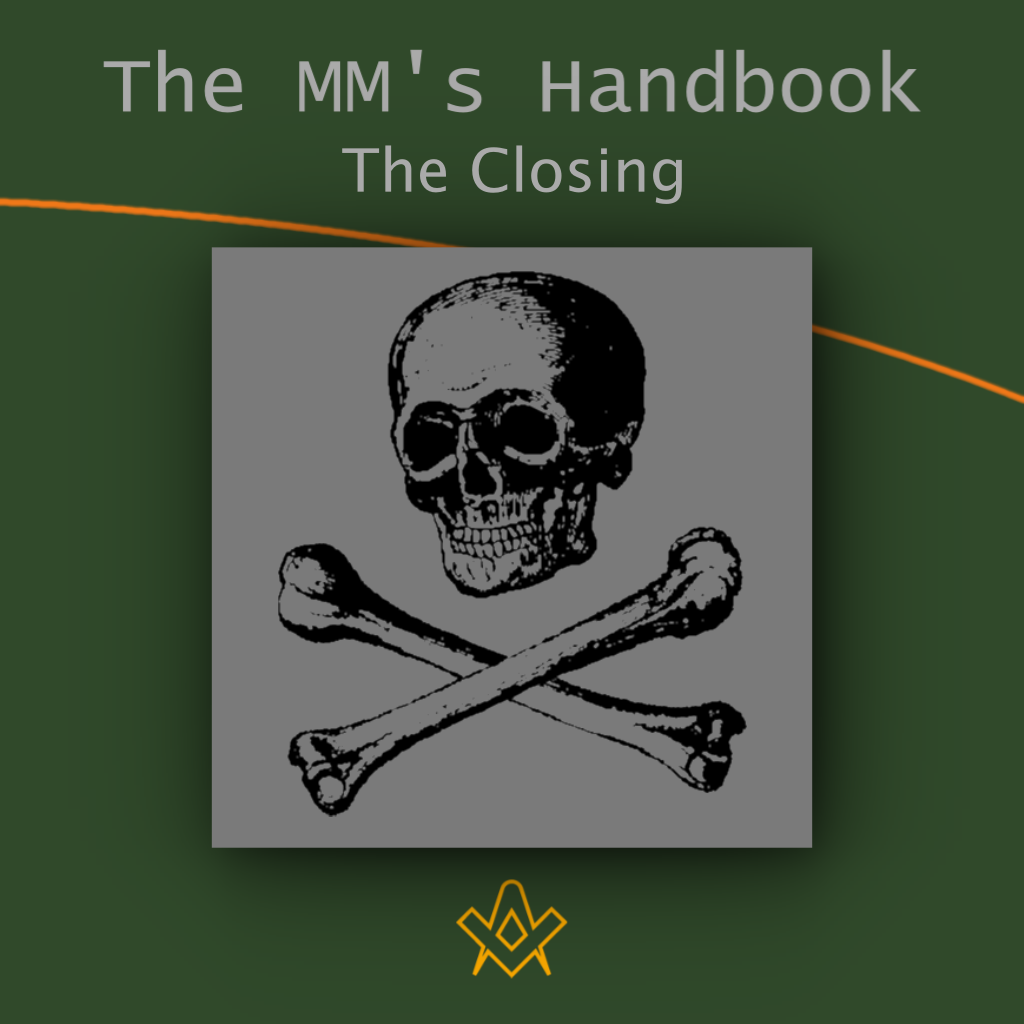Here we are reminded that we are working in symbolism, for we come back from the West, i.e., the grave, to this material world.
But we have only obtained substitutes, and we offer them as some consolation to the spirit, i.e., the W.M. The advance to the centre of the room is an obvious reference to the other centre.
The signs are communicated by the body to the soul, which passes them on to the spirit.
The meaning of these signs are dealt with in the ceremony, but it is worth noting that the word shows clearly that the secret is to be found only through the death of the body.
Chapter IX & X – The Closing
The actual Hebrew word whose corrupt form we use really means ‘My son is slain.’ It is also well to remember that the penal sign. and the sign of grief & destress (Scottish form) are, old signs which come down from the ancient mysteries, and are still found throughout the world.
A brief summary of that has already been said may be helpful. The penal sign is often associated with Shiva, the Destroyer, and is also found appropriately used at Burobudor in Java; it refers to that occult centre, the solar plexus.
In view of what the lost secret is, this sign is therefore most significant. In other words, it is a hint to those who deserve to know while it conceals from those who do not.
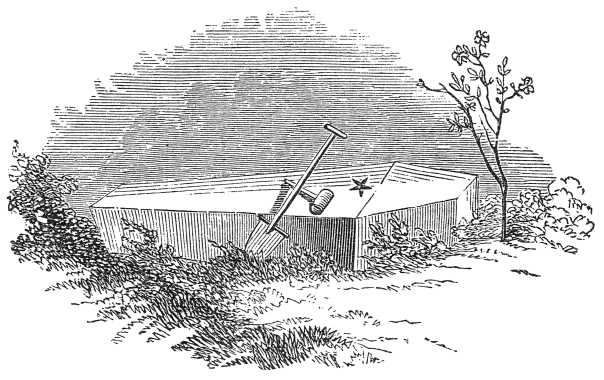
Grave
IMAGE LINKED: wikimedia Attribution 4.0 International (CC BY 4.0)
The Scottish sign of grief and destress is found all round the world, and always has the same meaning of an appeal for help.
It is used in the most primitive initiatory rites of a boy into manhood, and in Kenya the boy takes it to indicate that he is ready for the operation of circumcision to begin. In Nyasaland, among the Yaos, it is associated with a grave, and in Mexico the Preserver is shown making it.
He was slain and rose from the dead, and it is constantly found in Mexico in the form of a carving, consisting of a skeleton cut in half at the centre and making this sign, as, for example, at the Temple of Uxmal.
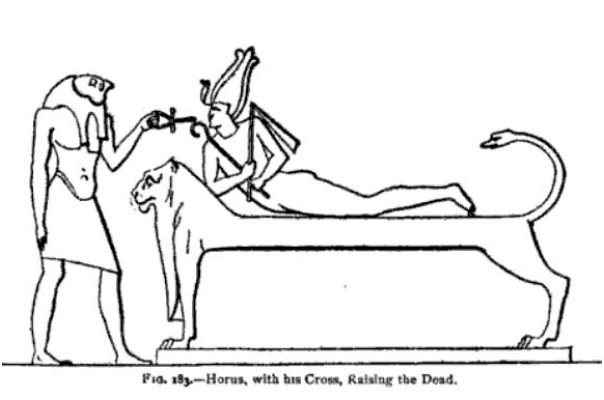
Horus, with his cross, raising the dead
IMAGE LINKED: wikimedia Attribution 4.0 International (CC BY 4.0)
The manner of communicating the secrets and the grip are equally old. Indeed, the lion’s grip appears to be the grip of all the Mysteries. It was the Grip of Mithra, and by this grip Osiris was raised.
Among the Druids it was also known, as is shown by a carving at Iona. I have, however, gone into the evidence for the antiquity of our signs so fully that I will not take up further space here.
We may as well add, however, that the number ‘5’; no doubt refers to the five senses of man, just as the seven steps remind us of the Egyptian sub-division of every mortal.
Having received the substituted secrets the W.M., or Spirit, confirms their use till the true ones are discovered. This last remark indicates that the quest is not ended or abandoned, in reality it has just begun; the first stage only has been passed, which stage is death. It also tells every Craft Mason that he a good craftsman till he has at least taken the Royal Arch.
Thus the spirit acknowledges that death is a step forward. It has freed the soul of the trammels imposed on it by the body, and so our life’s work on earth, as symbolised in the Lodge, is closed.
The knocks indicate that the spirit now dominates the soul and body and before we leave these heights it is well to point out that almost all the great religious teachers have taught that in some mysterious way this physical body will be transformed, and still be used after death.
In short, that matter, as well as spirit, is part of God. Science has shown that matter is indestructible, though its form may be changed completely, and so even after the symbolical death and resurrection, three knocks are still required.
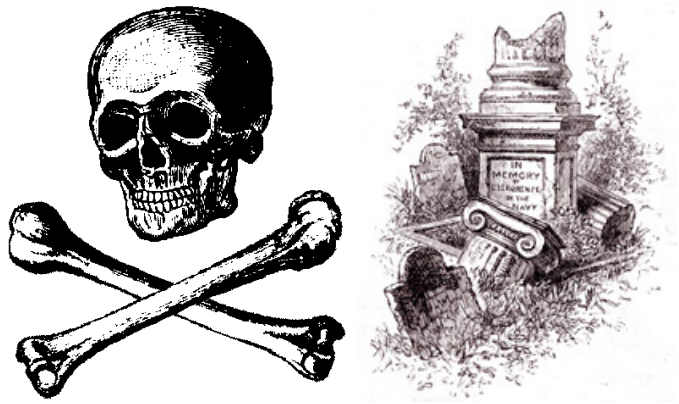
This then concludes the third degree. More than any other degree in Craft Masonry it has embedded in it ancient landmarks, brought down from a long distant past.
Under the surface lie hidden, meanings within meanings, which I make no pretence to have exhausted.
Already this book has exceeded in length either of the two previous ones, but to do full justice to the sublime degree one would require a volume four times as large as this.
I trust, however, that I have given some help, more especially to younger brethren, which will aid them to glimpse the deeper side of Freemasonry. If they too will strive to discover further alternative meanings, I shall feel this labour of mine has been well repaid.
Let me again warn them that just because Masonry is so old, its rituals, in the course of years, have been again and again revised, and newer meanings have continually been grafted on to the old stock. We are not entitled to say one meaning is right and another wrong.
Both may be right. Christianity itself has taken over a vast mass of pre-Christian ceremonies and symbols, and the student is perfectly entitled to consider that both the Christian and the pre-Christian interpretations of these symbols are equally deserving of respect.
There is also another point which should be borne in mind. Again and again we find that incidents and phrases which appear to have come from the Bible, on closer investigation are found not to correspond exactly with the Biblical narrative.
At one time there was a tendency to say that in these cases it was our duty to substitute the Biblical version for the ‘Inaccurate’ traditional form.
With all due respect I venture to say that such action is totally unjustifiable. Masonry is not the Bible. It is a traditional ritual into which 18th century revisers inserted fragments from the Bible, because that was the only book dealing with the period of the masonic incidents which was then available to them.
To-day, we know a great deal more about this period than did our 18th century predecessors, and the modern investigator has just cause to lament the well meaning, but misdirected, zeal of these worthy masons, who thereby have probably destroyed for ever valuable landmarks, which would have helped us to discover the historical growth and the symbolic meaning of many parts of our ceremonies.
Such apparent contradictions, and even mistakes, as appear to exist, should be carefully retained, for they are sure indications to the conscientious student of a connection with a long distant past, which modern methods of research may enable us finally to trace to its origin.
If, however, they are revised out of existence, future generations will have nothing to help them in the task of unravelling the true history and meaning of Freemasonry.
If a sign does not correspond with the explanation of the manner in which it is said to have originated, don’t alter the way of giving the sign, for it is an ancient landmark.
Rather try to discover if anywhere in the world that sign is still used in some old ceremony which may throw light on its true origin.
If Hiram A.Biff was not buried in a coffin, don’t eliminate the coffin from the tracing board, but rather bear in mind that his great prototype, Osiris, was so buried and that the coffin played a peculiarly important part in the legend which recounts his death : which legend was hoary with antiquity before King Solomon was born.
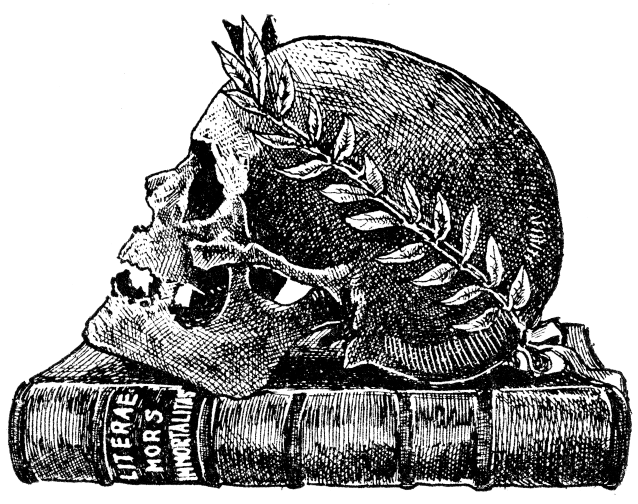
Finally, let me say that even if a man can never fathom the full meaning of the third degree, yet there is no man worthy of the name who has passed through that third degree but will certainly have learnt one important lesson, namely, how to die, and thereby will be the better man.
Article by: J. S. M. Ward
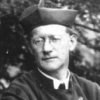
John Sebastian Marlow Ward (22 December 1885 – 1949) was an English author who published widely on the subject of Freemasonry and esotericism.
He was born in what is now Belize. In 1908 he graduated from the University of Cambridge with honours in history, following in the footsteps of his father, Herbert Ward who had also studied in history before entering the priesthood in the Anglican Church, as his father had done before him.
John Ward became a prolific and sometimes controversial writer on a wide variety of topics. He made contributions to the history of Freemasonry and other secret societies.
He was also a psychic medium or spiritualist, a prominent churchman and is still seen by some as a mystic and modern-day prophet.
Recent Articles: Master Mason's Handook J.S.M Ward

Book Review - The EA, FC, MM Handbooks
Essential reading for every Entered Apprentice, Fellowcraft, and Master Mason - these seminal books by J.S.M Ward are what every Mason needs!
more....
 The Master Mason's Handbook P1 Chapter 1 - Questions and Password; a brief explanation of the teaching of the third degree as contained in the symbols by J.S.M Ward |
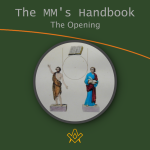 The Master Mason's Handbook P2 Chapter 2 - The Opening; a brief explanation of the teaching of the third degree as contained in the symbols by J.S.M Ward |
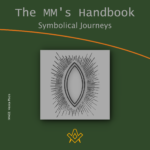 The Master Mason's Handbook P3 Chapter 3 - The Symbolical Journeys; We have seen in the previous books that the square and compasses are united on the pedestal in such a way as to form the Vesica Piscis, the emblem of the female principle, and the symbol of birth and rebirth. Hence symbolically the Candidate passes through the Vesica Piscis. |
 The Master Mason's Handbook P4 Chapter 4 - The Exhortation The opening part of the exhortation gives a convenient summary of the previous degrees and quite clearly indicates that the first inner meaning of the series is Birth, Life which is of course educational and preparatory for its sequel, and Death. |
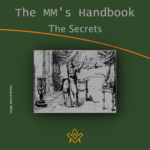 The Master Mason's Handbook P5 Chapter 5 - The Secrets. Having thus been brought into the place of light the Candidate is given not the genuine secrets, but only substituted ones. This fact must often have puzzled the Candidate. The practical reason given in the ritual, though perfectly intelligible to a Royal Arch mason (Companion) , cannot be the real one. |
 The Master Mason's Handbook P6 Chapter 6 - The Badge - On his re-entering the Lodge, the candidate is presented and in due course invested with the badge of a Master Mason by the S.W. The Badge itself, however, is full of symbolic meaning…. |
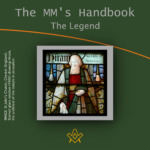 The Master Mason's Handbook P7 Chapter 7 - The Legend - After the ceremonial investiture of the Candidate the W.M. continues the narrative of the traditional history. At least this is the case in most English workings, but in some Scotch workings the whole story is told first, and subsequently the Candidate and the other brethren act the chief parts. Perhaps one of the most important points to realise is the correct meaning of the name Hiram Abiff . |
 The Master Mason's Handbook P8 Chapter 8 - The Tracing Board - The next part of the narrative is incorporated in most English workings with the Tracing Board. The most interesting feature is the description of the grave. It is obvious that peculiar stress is laid on the centre, even in the present form of our ritual, because of the way in which the measurements are given. |
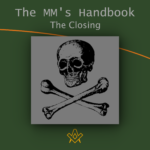 The Master Mason's Handbook P9/10 Chapters 9 & 10 The Closing Finally, even if a man can never fathom the full meaning of the third degree, yet there is no man worthy of the name who has passed through that third degree but will certainly have learnt one important lesson, namely, how to die, and thereby will be the better man. |
masonic knowledge
to be a better citizen of the world
share the square with two brothers

click image to open email app on mobile device


